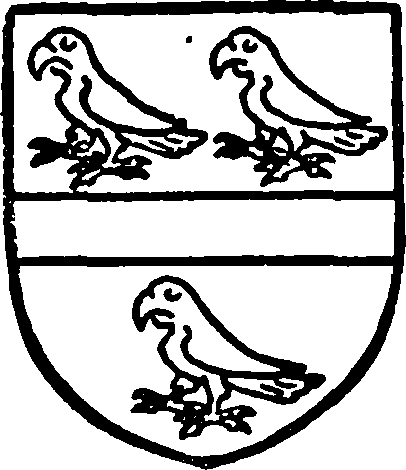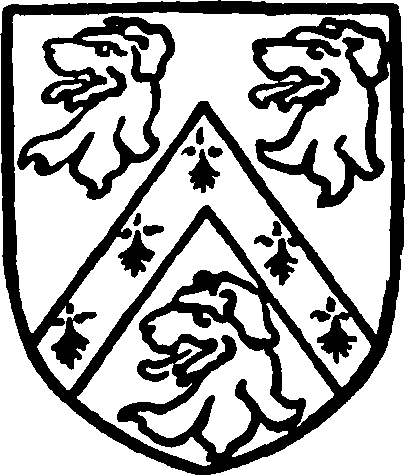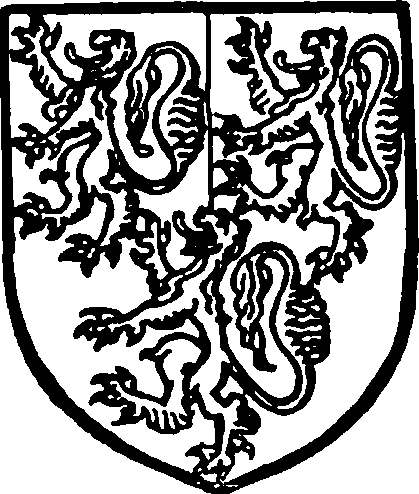A History of the County of York North Riding: Volume 2. Originally published by Victoria County History, London, 1923.
This free content was digitised by double rekeying. All rights reserved.
'Parishes: Upper Helmsley', in A History of the County of York North Riding: Volume 2, ed. William Page (London, 1923), British History Online https://prod.british-history.ac.uk/vch/yorks/north/vol2/pp141-143 [accessed 19 April 2025].
'Parishes: Upper Helmsley', in A History of the County of York North Riding: Volume 2. Edited by William Page (London, 1923), British History Online, accessed April 19, 2025, https://prod.british-history.ac.uk/vch/yorks/north/vol2/pp141-143.
"Parishes: Upper Helmsley". A History of the County of York North Riding: Volume 2. Ed. William Page (London, 1923), British History Online. Web. 19 April 2025. https://prod.british-history.ac.uk/vch/yorks/north/vol2/pp141-143.
In this section
UPPER HELMSLEY
Hamelsec (xi cent.); Hemelesei, Heneleseya (xii cent.); Hemeleshey (xiii cent.); Over Hemylsey, Overhelmesley (xiv–xvii cent.); Upper Helmsley (xviii cent.).
The parish of Upper Helmsley covers an area of nearly 833 acres, 492 of which are arable land, where barley, wheat and potatoes are grown, and 208 permanent grass. (fn. 1) The soil is sandy on a subsoil of Keuper marls and bunter sandstone. In the west and north of the parish the elevation is 125 ft. above the ordnance datum, in the east the general level is 75 ft.
The village, which consists of only a few buildings, lies in the north of the parish round a bend in a road which enters it from Gate Helmsley on the south and runs northwards into Sand Hutton. Here on the site of the old manor-house and surrounded by extensive grounds is Upper Helmsley Hall, a modern house, the residence of Mr. E. A. F. W. Herbert, standing on a considerable eminence between the church and the 'Hall Garths' (fn. 2) to the north and the Home Farm to the south. The York, Market Weighton and Beverley branch of the North Eastern railway traverses the south of the parish on its course from Warthill to Holtby station, which stands within the borders of Upper Helmsley, a short distance east of the point of intersection of the railway line and main road.
Another road leads from the village to the Grange in the south-east of the parish, near which is Low Moor. Upper Helmsley Common, which was inclosed in 1868, (fn. 3) lies in the north-west, south of and adjoining Sand Hutton Common. Eastwards again Scrogs Wood, of which a considerable part belongs to Buttercrambe, recalls the 'Skroggehill' and 'Skroggeclose,' which were part of John Thweng's demesne before his forfeiture in 1570. (fn. 4) Other names of the same date which seem now to have disappeared are Kelland Field, Broke Close, Colman's Garth and Langland Closes. (fn. 5)
Manor
In 1086 there were 4 geldable carucates, mostly waste, in UPPER HELMSLEY, which were held of the Count of Mortain by Niel Fossard. (fn. 6) Two carucates afterwards came, probably on the forfeiture of the count's son and heir, (fn. 7) to Niel Daubeney, and by him were granted to the hospital of St. Peter of York, (fn. 8) better known by its later invocation to St. Leonard. (fn. 9) The possessions of St. Leonard in Upper Helmsley were still in the hands of the master of the hospital in 1328 when he sued his late bailiff for failing to account for the receipts of his bailiwick, (fn. 10) but, like other benefactions to this house, they had been alienated (fn. 11) to some extent before 1519, when only the overlordship of the manor remained to it. (fn. 12) Forty years later Upper Helmsley was declared to be held of Henry Bowar in socage as of his manor of Beningbrough, (fn. 13) but in 1579 and 1589 the overlordship belonged to the queen by right of her hospital of St. Leonard. (fn. 14) The last vestige of the ancient connexion of the manor of Upper Helmsley with this house disappeared soon afterwards, and from 1593 to 1637, when the latest mention of the overlordship occurs, it was held of the Crown as of the manor or castle of Sheriff Hutton. (fn. 15)
It is probable that from the time of the Domesday Survey, when the soke of Upper Helmsley and of 11 carucates in Sheriff Hutton was in Bulmer, (fn. 16) the other 2 carucates here followed the descent of that manor, coming with it into the possession of the lords of Sheriff Hutton. The earliest mention of them, however, seems to occur in 1282, when one-eighth of a knight's fee in Helmsley was held of Robert de Nevill. (fn. 17) A part of this overlordship (fn. 18) had lapsed before 1428, when lands held in Upper Helmsley and other parishes by twelve separate tenants were described as formerly of Ralph Nevill. (fn. 19) Some memory of it was revived in the latter years of the 16th century, when it was recorded that one-eighth of a knight's fee, parcel of the manor of Upper Helmsley, and once held of the heirs of Robert Nevill of Raskelf or Sheriff Hutton, was now held of the queen as of her manor of Sheriff Hutton. (fn. 20) It is noteworthy also that 2½ carucates which must be identified with the former possessions of St. Leonard's Hospital in this parish were at the same time described as one-third of a knight's fee held of the queen as of the same manor by military service, (fn. 21) and not, as in 1579 and 1589, in socage. (fn. 22)
It is said that in the reign of Edward II the manor of Upper Helmsley was brought by Alice daughter and heir of Walter de Helmsley to her husband Edward Thweng and passed through the unbroken line of their male descendants to Marmaduke Thweng, (fn. 23) who died seised of it in 1518. (fn. 24) This statement is partially corroborated by the fact that in 1330 a settlement of a very considerable amount of property in the two Helmsleys and elsewhere was made on Walter de Helmsley and his wife Alice. (fn. 25)

Thweng. Argent a fesse gules between three popinjays vert.
The manor of Upper Helmsley, shown by the inquiry of 1519 to have been held by Marmaduke Thweng of the hospital of St. Leonard, (fn. 26) descended to his son and heir George, then aged eighteen, who died in possession of it in 1560. (fn. 27) Ten years later John, his eldest son and heir, a man of mature age, (fn. 28) 'departed beyond the seas,' and, according to the petition of his children in 1573, 'there liveth, his lands and goods being seized for the Queen.' (fn. 29)
Both the Helmsley manors had already been granted, in consequence of John's forfeiture, to one John Morgan, (fn. 30) but an allowance of £12 a year was made from them for the maintenance of the fugitive's five children. (fn. 31) John Thweng must, however, have made his peace with the queen before his death in 1578, when he was found in undisputed possession of his patrimony. (fn. 32) His eldest son Marmaduke died seised in 1589, leaving only an infant daughter Margaret. (fn. 33) Six months later a posthumous son, also named Marmaduke, was born, but lived only three years. His lands then reverted to his sister, (fn. 34) who made a settlement of her inheritance in tail-male in 1605, when she married George Wilmer of Stratford-leBow. (fn. 35) The next year George and Margaret obtained livery of the 'manor or hamlet' of Upper Helmsley, (fn. 36) which descended in 1632, on the death of Margaret, then wife of Henry Fairfax, to their son and heir, another George Wilmer. (fn. 37) The younger George, who had been admitted to the Middle Temple in 1623, and was, like his father, a collector of the petty customs of merchant strangers, (fn. 38) made a settlement of his manors of Upper and Gate Helmsley in 1640 on his marriage with Rebecca daughter of Randall Baskervill. (fn. 39) Randall, their eldest son and heir, (fn. 40) lord in 1691, (fn. 41) left the manor of Upper Helmsley to Thomas his son by a third wife, Isabel Wood. (fn. 42) From Thomas, who died a minor in 1728, Upper Helmsley passed to his uncle and heir-at-law John, at whose death nine years later it came to Randall and John, sons of the elder Randall Wilmer by his second wife Sarah Stainforth. (fn. 43) Both brothers died in 1761, and the manor came, once more in moieties, to the second Randall's daughters. Anne, the elder, married her cousin Wilmer Gossip, grandson of her uncle George, the elder Randall Wilmer's son by his first wife, through the marriage of his daughter and co-heir Anne with William Gossip. (fn. 44) In accordance with the terms of their marriage settlement Anne Gossip's moiety was conveyed in 1771 by herself and her widowed mother Jane Wilmer to her husband. (fn. 45) Wilmer Gossip died without issue in 1790, two years after he had devised this estate by will to Joshua Field for the use of his wife and mother-in-law. (fn. 46) In 1798 his nephew and heir William Gossip executed a deed of release for manors and lands in Upper Helmsley and elsewhere, (fn. 47) and six years later he sold the moiety of Upper Helmsley Manor to Joshua Field. (fn. 48) The two moieties were thus reunited, the other having come into Mr. Field's possession by his marriage in 1774 with Mary, Randall Wilmer's younger daughter and co-heir. (fn. 49) From John Wilmer Field, their elder son, who succeeded his father in 1814 and died without male issue in 1837, the manor passed to his younger brother Joshua Field. (fn. 50) He also left no son, and on his death in 1863 Upper Helmsley descended to Joshua Francis Whittell, son and heir of John Wilmer Field's elder daughter Mary Anne by her husband Eugene Thomas Whittell. (fn. 51) Mr. Whittell died in 1867, leaving a daughter Anna Maria, who two years later married LieutenantColonel George Edward Herbert. (fn. 52) Their son Mr. Edward Arthur Field Whittell Herbert is now lord of the manor.

Field. Barry wavy argent and azure a lion or with two scallops or in the chief.

Whittell. Gules a cheveron ermine between three talbots' heads razed or.

Herbert. Party azure and gules three lions argent.
Very little is known of the early history of the Nevills' fee in this parish. For a period of more than eighty years after 1282, when William de Kelingthorp held one-eighth of a knight's fee of them in Upper Helmsley, (fn. 53) no sub-tenant's name is recorded, (fn. 54) but in 1367 it was found that William Gray and Richard Bernard held 2 carucates here of Ralph de Nevill. (fn. 55) William's moiety passed before 1388 to his son Thomas, whose son John held in 1413 and 1428. (fn. 56)
It would seem that John died without issue, (fn. 57) and that his little property in Upper Helmsley came to the Tempests of Studley Royal. Isabel daughter and heir of 'Sir John le Gras of Studley,' presumably one of the Grays of York, since he was high sheriff of the city in 1309, (fn. 58) became by her marriage with Sir Richard Tempest grandmother of Denise Tempest, (fn. 59) who with her husband William Mallory sold 'half the manor of Upper Helmsley,' part of the inheritance of Denise, to John and Henry Thwaites in 1463. (fn. 60) Richard Bernard may have been the ancestor of Robert Bernard, who in 1428 was one of the tenants of the Nevills in certain vills, amongst which Upper Helmsley was included. (fn. 61) Before 1518 both moieties had been absorbed in the manor held of St. Leonard's Hospital by Marmaduke Thweng. (fn. 62)
Court leet and view of frankpledge were mentioned as appurtenances of the manor of Upper Helmsley in Elizabeth's grant to John Morgan. (fn. 63) At that date it had a capital messuage, a horse-mill and a dovehouse, (fn. 64) and there seems also to have been a dovecot here in 1641. (fn. 65)
Church
The church of ST. PETER was entirely rebuilt in 1888, and is a stone structure in the Norman style consisting of chancel with apse, nave and western tower. The previous church was erected in 1795 by Mrs. Jane Wilmer. Built into the south wall of the chancel is a stone slab bearing an incised cross. The font has a plain 12th-century hemispherical bowl resting on a circular shaft.
There is one 17th-century bell, and three others, which are new.
The plate consists of a set of cup, paten and flagon of 1733 (London) inscribed 'The gift of Jane Wilmer to the church of Upper Helmsley,' and bearing the arms: Gules a cheveron or dividing three eagles displayed, a crescent for difference impaling argent a cross moline azure. The paten bears also the crest, an eagle displayed rising from a mural crown, and the motto 'Neutrisque extinguar.' The flagon bears the same inscription, coat of arms and date mark. There are also two pewter almsdishes.
The registers begin in 1600.
Advowson
There is some doubt whether the church of Upper Helmsley was given to the hospital of St. Leonard by Niel Daubeney or by his son Roger Mowbray. (fn. 66) It is not mentioned in the charter of Henry I, which confirms Niel's grant of land to this house, and in the charter of Henry II Roger is named as donor. (fn. 67) On the other hand, a bull of Pope Adrian preserved in the chartulary of St. Leonard places it amongst Niel's benefactions, (fn. 68) and if this document be genuine it may be assumed that Roger merely confirmed his father's gift of church and land. (fn. 69) The church was valued at £5 before 1291, (fn. 70) and at £2 after that date; it came to the Crown on the surrender of St. Leonard's Hospital in 1540, (fn. 71) and remained in its gift, the lord chancellor exercising the patronage on behalf of the sovereign from 1829 until 1899. (fn. 72) It was then united with the living of Gate Helmsley, and the lord chancellor and the Archbishop of York now present alternately. (fn. 73)
In 1535 a dwelling-house with toft and croft belonged to the rectory, (fn. 74) and the glebe-house was described as fit for residence three centuries later. (fn. 75) It has since been sold and pulled down. (fn. 76) Forty-three acres of glebe with residence are now attached to the combined living.
There are not apparently any endowed charities in this parish.